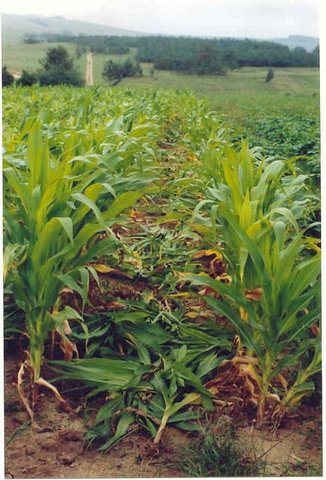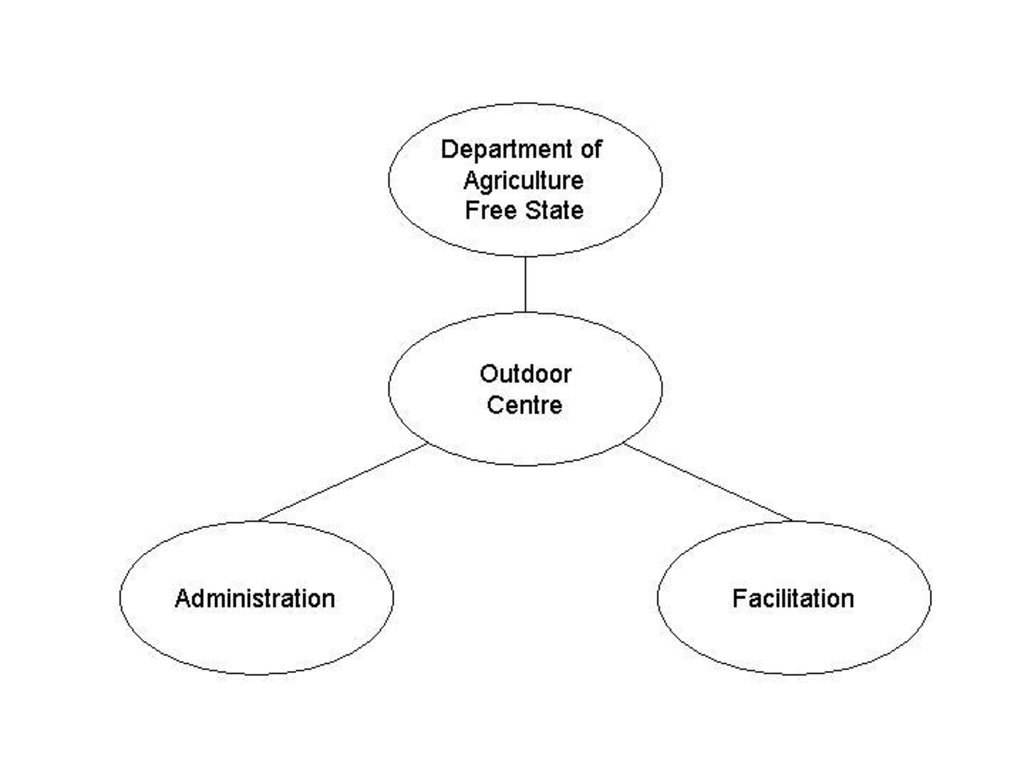Multi-stakeholder LandCare process [แอฟริกาใต้]
- ผู้สร้างสรรค์:
- การอัพเดท:
- ผู้รวบรวม: Hendrik Johannes Smith
- ผู้เรียบเรียง: –
- ผู้ตรวจสอบ: Fabian Ottiger
Multi-stakeholder process, LandCare, Action research
approaches_2561 - แอฟริกาใต้
ดูส่วนย่อย
ขยายทั้งหมด ย่อทั้งหมด1. ข้อมูลทั่วไป
1.2 รายละเอียดที่ติดต่อได้ของผู้รวบรวมและองค์กรที่เกี่ยวข้องในการประเมินและการจัดเตรียมทำเอกสารของแนวทาง
ผู้เชี่ยวชาญ SLM:
Hofer Peter
Amt für Landwirtschaft und Natur des Kantons Bern LANAT
Ruetti, 3052 Zollikofen
สวิตเซอร์แลนด์
ชื่อของโครงการซึ่งอำนวยความสะดวกในการทำเอกสารหรือการประเมินแนวทาง (ถ้าเกี่ยวข้อง)
Amt für Landwirtschaft und Natur des Kantons Bern (LANAT) - สวิตเซอร์แลนด์1.3 เงื่อนไขที่เกี่ยวข้องกับการใช้ข้อมูลที่ได้บันทึกไว้ผ่านทาง WOCAT
ผู้รวบรวมและวิทยากรหลักยอมรับเงื่อนไขเกี่ยวกับการใช้ข้อมูลที่ถูกบันทึกผ่านทาง WOCAT:
ใช่
1.4 การอ้างอิงถึงแบบสอบถามเรื่องเทคโนโลยี SLM

Conservation Agriculture [แอฟริกาใต้]
Conservation agriculture included aspects such as crop rotation, mulching and no-tillage.
- ผู้รวบรวม: Hester Gertruida Jansen van Rensburg
2. คำอธิบายของแนวทาง SLM
2.1 การอธิบายแบบสั้น ๆ ของแนวทาง
A multi-stakeholder approach using action research methodologies to implement conservation agriculture
2.2 การอธิบายอย่างละเอียดของแนวทาง
การอธิบายอย่างละเอียดของแนวทาง:
Aims / objectives: - To develop and diffuse conservation agriculture technologiy
- To develop capacity among stakeholders
- To improve soil health
- To reverse soil degradation
Methods: - Training of trainers, i.e. lead farmers and extension worker
- Awareness events, e.g. farmer days, field days
- On-farm experimentation
- Farmer-to-farmer extension
- Local institutionalization
- Partnerships Monitoring and Evaluation
Stages of implementation: 1. Stakeholder analysis
2. Diagnosis / Situation analysis
3. Planning and design
4. Implementing and management
5. Learning and adopting
6. Exit strategy
Role of stakeholders: Researchers: - facilitators, advisors, trainers, management of trials
Extension worker:- advisors, trainers
Lead farmers: Trainers for other farmers, awarenes builders, on-farm: leaders of farmer managed trials/experiments, facilitators for learning groups
Other important information: Other stakeholders, e.g. input suppliers are also important and need to be involved at various stages and events
2.5 ประเทศ ภูมิภาค หรือสถานที่ตั้งที่ได้นำแนวทางไปใช้
ประเทศ:
แอฟริกาใต้
ภูมิภาค/รัฐ/จังหวัด: :
South Africa / KwaZulu-Natal
ข้อมูลเฉพาะเพิ่มเติมของสถานที่ตั้ง:
Bergville / Emmaus Ward
2.6 วันที่เริ่มต้นและสิ้นสุดของแนวทาง
ระบุปีที่เริ่ม:
2000
การสิ้นสุดลง (ถ้าแนวทางไม่ได้ใช้อีกต่อไป):
2006
2.7 ประเภทของแนวทาง
- ใช้โครงงานหรือแผนงานเป็นฐาน
2.8 เป้าหมายหรือวัตถุประสงค์หลักของแนวทาง
The Approach focused on SLM only
Build capacity among key stakeholders Change traditional practices to conservation agriculture practices Build strong local institutions (learning groups) Improve experimental skills Improve soil health
The SLM Approach addressed the following problems: Soil erosion Soil fertility and -acidity Poverty / food security Lack of knowledge and skills Poor / weak local institutions
2.9 เงื่อนไขที่เอื้ออำนวยหรือเป็นอุปสรรคต่อการนำเทคโนโลยีภายใต้แนวทางนี้ไปปฏิบัติใช้
การมีไว้ให้หรือการเข้าถึงแหล่งการเงินและบริการ
- เป็นอุปสรรค
Lack of capital inputs
Treatment through the SLM Approach: Groups save money to buy inputs in bulk
การจัดตั้งระดับองค์กร
- เป็นอุปสรรค
Poor local institutions, poor leadership
Treatment through the SLM Approach: Building capacity in learning groups to learn and adapt / develop leadership / facilitation skills
กรอบแนวทางในการดำเนินการด้านกฎหมาย (การถือครองที่ดิน สิทธิในการใช้ที่ดินและน้ำ)
- เอื้ออำนวย
The existing land ownership, land use rights / water rights moderately helped the approach implementation: Helped ot introduce grazing system that promotes rotational grazing, which is a major new approach for communal grazing.
3. การมีส่วนร่วมและบทบาทของผู้มีส่วนได้ส่วนเสียที่เกี่ยวข้อง
3.1 ผู้มีส่วนได้ส่วนเสียที่เกี่ยวข้องในแนวทางนี้และบทบาท
- ผู้ใช้ที่ดินระดับท้องถิ่นหรือชุมชนระดับท้องถิ่น
Different cultural roles and attitudes between men and women. Women were better performers in training others; women were easier trained than men
- องค์กรพัฒนาเอกชน
- รัฐบาลแห่งชาติ (ผู้วางแผน ผู้ทำการตัดสินใจ)
- องค์การระหว่างประเทศ
3.2 การเกี่ยวข้องของผู้ใช้ที่ดินระดับท้องถิ่นหรือชุมชนระดับท้องถิ่นในช่วงต่างๆของแนวทาง
| ความเกี่ยวข้องของผู้ใช้ที่ดินระดับท้องถิ่นหรือชุมชนระดับท้องถิ่น | ระบุผู้ที่มีส่วนเกี่ยวข้องและอธิบายกิจกรรม | |
|---|---|---|
| การริเริ่มหรือการจูงใจ | ไม่มี | Farmers were interviewed during the informal semi-structured survey |
| การวางแผน | ไม่มี | |
| การดำเนินการ | ปฏิสัมพันธ์ | Lead farmers were part of implementing team; were responsible for farmer-to-farmer extension |
| การติดตามตรวจสอบหรือการประเมินผล | ปฏิสัมพันธ์ | Were fully involved in most monitoring and evaluation activities |
| Research | ปฏิสัมพันธ์ | Lead farmers were responsible for farmer mangaed trials |
3.3 แผนผังแสดงขั้นตอนการทำงาน (ถ้ามี)
คำอธิบาย:
Junior Landcare FreeState organogram
ผู้เขียน:
L Lindeque, Pretoria, South Africa (Free State)
3.4 การตัดสินใจเลือกใช้เทคโนโลยี SLM
ระบุผู้ที่ทำการตัดสินใจเลือกเทคโนโลยีมากกว่าหนึ่งวิธีไปปฏิบัติใช้:
- ผู้ใช้ที่ดินเป็นผู้ตัดสินใจหลัก โดยการสนับสนุนจากผู้เชี่ยวชาญ SLM
การอธิบาย:
Decisions on the method of implementing the SLM Technology were made by mainly by SLM specialists with consultation of land users
4. การสนับสนุนด้านเทคนิค การสร้างขีดความสามารถ และการจัดการด้านความรู้
4.1 การสร้างขีดความสามารถ / การอบรม
ได้มีการจัดอบรมให้แก่ผู้ใช้ที่ดินหรือผู้มีส่วนได้ส่วนเสียคนอื่น ๆ หรือไม่:
ใช่
ให้ระบุว่าใครเป็นผู้ได้รับการอบรม:
- ผู้ใช้ที่ดิน
รูปแบบการอบรม:
- ใช้พื้นที่ทำการสาธิต
- จัดคอร์ส
หัวข้อที่พูด:
Conservation agriculture principles, communication, visionry, training, value adding
4.2 การบริการให้คำแนะนำ
ผู้ใช้ที่ดินมีการเข้าถึงการรับบริการให้คำปรึกษาหรือไม่:
ใช่
ระบุว่ามีบริการให้คำปรึกษาหรือไม่:
- ไปเยี่ยมชมสถานที่
การอธิบาย/แสดงความคิดเห็น:
Name of method used for advisory service: Multi-stakeholder process using action research; Key elements: Monitoring and evaluation / experiments, Training of farmers, Farmer-to-farmer extension
Advisory service is quite adequate to ensure the continuation of land conservation activities; Have been empowered quite successfully with project
4.4 การติดตามตรวจสอบและประเมินผล
การติดตามตรวจสอบและประเมินผลเป็นส่วนหนึ่งของแนวทางหรือไม่:
ใช่
ความคิดเห็น:
bio-physical aspects were regular monitored through measurements; indicators: Soil health
technical aspects were regular monitored through measurements; indicators: Conservation agriculture principles adopted
socio-cultural aspects were regular monitored through observations; indicators: Changes in SKA
economic / production aspects were regular monitored through measurements; indicators: Yield & gross margin
area treated aspects were regular monitored through observations; indicators: Area
no. of land users involved aspects were regular monitored through measurements; indicators: Number of farmers trained
management of Approach aspects were None monitored through measurements; indicators: Number of farmers using tools for adaptive management
There were many changes in the Approach as a result of monitoring and evaluation: Monitoring and evaluation was the main methodology used to induce change to focus, improve and integrate project management. Land users learned to use monitoring and evaluation tools to improve their learning in groups as well as their adaptive management capacity.
4.5 การวิจัย
การวิจัยเป็นส่วนหนึ่งของแนวทางหรือไม่:
ใช่
ให้ข้อมูลเพิ่มเติมและให้ระบุผู้ทำการวิจัย:
Action research through monitoring and evaluation; applied at different levels; used various tools and technologies to apply it. Action research was used to improve, focus and integrate project strategies
Research was carried out on-farm
5. การสนับสนุนด้านการเงินและวัสดุอุปกรณ์
5.1 ระบุงบประมาณประจำปีสำหรับแนวทาง SLM นี้
ถ้าหากว่างบประมาณประจำปีไม่เป็นที่ทราบแน่นอน ให้ระบุช่วงลงไป:
- 10,000-100,000
แสดงความคิดเห็น (แหล่งของการระดมทุน ผู้บริจาคคนสำคัญ):
Approach costs were met by the following donors: government (LandCare programme,90%, Research programme 10%): 100.0%
5.2 การสนับสนุนด้านการเงิน / วัสดุอุปกรณ์ให้แก่ผู้ใช้ที่ดิน
ผู้ใช้ที่ดินได้รับการสนับสนุนด้านการเงิน / วัสดุอุปกรณ์ไปปฏิบัติใช้เทคโนโลยีหรือไม่:
ใช่
5.3 เงินสนับสนุนสำหรับปัจจัยนำเข้า (รวมถึงแรงงาน)
- อุปกรณ์
| ระบุปัจจัยนำเข้าที่ได้รับการสนับสนุน | เห็นด้วยระดับไหน | ระบุเงินสนับสนุน |
|---|---|---|
| เครื่องจักร | ได้รับการช่วยเหลือทางการเงินแบบเต็ม | |
| เครื่องมือ | ได้รับการช่วยเหลือทางการเงินแบบเต็ม | |
- การเกษตร
| ระบุปัจจัยนำเข้าที่ได้รับการสนับสนุน | เห็นด้วยระดับไหน | ระบุเงินสนับสนุน |
|---|---|---|
| เมล็ด | ได้รับการช่วยเหลือทางการเงินบางส่วน | |
| ปุ๋ย | ได้รับการช่วยเหลือทางการเงินบางส่วน | |
ถ้าแรงงานโดยผู้ใช้ที่ดินเป็นปัจจัยนำเข้าที่มีอยู่มากมาย ระบุด้วยว่าเนื่องจาก:
- สมัครใจ
ความคิดเห็น:
Only labour on main trial was paid in cash, other was voluntary
5.4 เครดิต
มีการจัดหาเครดิตมาให้ภายใต้แนวทาง SLM หรือไม่:
ไม่ใช่
6. การวิเคราะห์ผลกระทบและการสรุป
6.1 ผลกระทบของแนวทาง
ช่วยให้ผู้ใช้ที่ดินนำเอาเทคโนโลยี SLMไปใช้และบำรุงรักษาสภาพไว้ได้หรือไม่:
- ไม่ใช่
- ใช่ เล็กน้อย
- ใช่ ปานกลาง
- ใช่ อย่างมาก
Conservation agriculture pronciples: no-till, mulching, multiple cropping, using special implements
Did other land users / projects adopt the Approach?
- ไม่ใช่
- ใช่ เล็กน้อย
- ใช่ ปานกลาง
- ใช่ อย่างมาก
Aim is to scale-out approach to other projects/ programmes.
Did the Approach help to alleviate poverty?
- ไม่ใช่
- ใช่ เล็กน้อย
- ใช่ ปานกลาง
- ใช่ อย่างมาก
They achieved food security status; could sell some products and some of the value added products
6.3 ความยั่งยืนของกิจกรรมของแนวทาง
ผู้ใช้ที่ดินสามารถทำให้สิ่งต่างๆ ที่ได้ปฏิบัติใช้โดยแนวทางนี้ยั่งยืนได้หรือไม่ (โดยไม่มีการสนับสนุนจากภายนอก):
- ใช่
6.4 จุดแข็งและข้อได้เปรียบของแนวทาง
| จุดแข็ง / ข้อได้เปรียบของแนวทางในทัศนคติของผู้ใช้ที่ดิน |
|---|
| Have higher level of knowledge and skills (How to sustain/ enhance this strength: Through experimentation, communication forums, field days, training courses) |
| Better contact with outside stakeholders - improved networks (How to sustain/ enhance this strength: Frequent stakeholder forums) |
| Higher status of lead farmers and their groups (How to sustain/ enhance this strength: Continuous contact and use of lead farmers' experience and capacity) |
| Improved food security through collective action (How to sustain/ enhance this strength: Monitoring and evaluation of sustainable land management practices) |
| Improved communication between land users (How to sustain/ enhance this strength: Frequent local action forums) |
| จุดแข็ง / ข้อได้เปรียบของแนวทางในทัศนคติของผู้รวบรวมหรือวิทยากรหลัก |
|---|
| Empower key stakeholders (How to sustain/ enhance this strength: Frequent stakeholder forums / meetings / workshops) |
| Help people 'learn how to learn' (How to sustain/ enhance this strength: Provide them with learning tools (monitoring and evaluation) and skills) |
| Promote a culture of adoptive management (How to sustain/ enhance this strength: Build their capacity through monitoring and evaluation tools and processes) |
| Develop a capacity to experiment among farmers (How to sustain/ enhance this strength: Facilitate and promote experiments through agricultural research) |
| Develop self-reliant local institutions and leadership (How to sustain/ enhance this strength: Develop local capacity to lead and facilitate learning groups) |
7. การอ้างอิงและการเชื่อมต่อ
7.1 วิธีการหรือแหล่งข้อมูล
- ไปเยี่ยมชมภาคสนาม การสำรวจพื้นที่ภาคสนาม
- การสัมภาษณ์กับผู้ใช้ที่ดิน
7.2 การอ้างอิงถึงสิ่งตีพิมพ์
ชื่อเรื่อง ผู้เขียน ปี ISBN:
Amt für Landwirtschaft und Natur des Kantons Bern LANAT, Ruetti, 3052 Zollikofen. Kanton Bern fördert Ressourcen schonenden Ackerbau.AGRARForschung 14 (3): 128-133, 2007
ช่องทางในการสืบค้น และราคา:
http://www.vol.be.ch/site/lanat-3155-mbressourcen.pdf
ลิงก์และโมดูล
ขยายทั้งหมด ย่อทั้งหมดลิงก์

Conservation Agriculture [แอฟริกาใต้]
Conservation agriculture included aspects such as crop rotation, mulching and no-tillage.
- ผู้รวบรวม: Hester Gertruida Jansen van Rensburg
โมดูล
ไม่มีโมดูล


